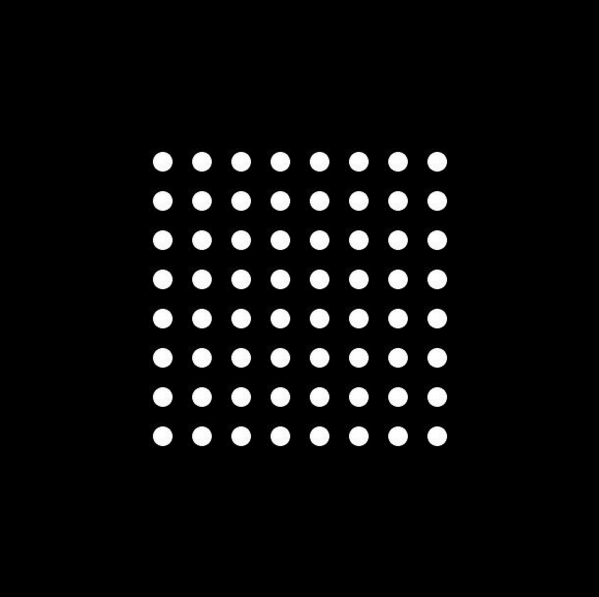We invited artist Brendan Dawes to takeover the Somerset House Instagram account. He responded by creating a series of films, coded just for us to demonstrate his work process, the power of iteration all through 64 dots.

“All my work is born from the same process, combining and iterating often mundane components to see what might emerge by simply playing within a system. So lets start with a system of 64 dots.”
“I always hated maths at school; but nobody ever showed me the beauty of mathematics. Like a sine wave. Using a sine wave I can easily make our little grid of 64 dots oscillate up and down.”
“Rather than move all the dots at the same rate, so they’re uniform, instead I can change the frequency of the sine wave so it’s slightly different for each dot. Now things start to happen – dots begin to interact with each other and over time different patterns begin to emerge.”
“Often within data visualisation you’re mapping a number to some kind of visual representation of that number. So here our sine wave generated number is no longer moving dots but instead altering their size, resulting in an undulating pattern, reminiscent of halftone patterns you might see in print.”
“Time is an important part of composition. Here we increase the frequency of our sine wave resulting in a much more frenetic aesthetic. Notice also how the opacity – how transparent the dot is, is also influenced by the sine wave. These are just small changes from the one before but completely alter the feel of the piece.”
“Lets change the dot placement from a grid to something a little more interesting like this Vogel spiral pattern – something you might see formed from the head of a sunflower. Again, the sine wave is used, this time to give it an almost breathing quality.”
“Using the same same pattern, we can outline the dots and also have our friend the sine wave seemingly create an animation just by having our sine wave alter the transparency. To me, it looks like the system is thinking, or at least, active.”
“Enough of the 2D world – let’s send our 64 dots into 3D space around a sphere! Of course our dots don’t have any depth, being just flat dots, but there’s something pleasing when they disappear for a moment.”
“For me, a piece of work is not a finite, finished thing. Often times the systems I make are simply creative environments with a set of rules for people to play within. These interactions within a system allow for new aesthetics and behaviours to emerge. Here, the position of the user controlled yellow dot influences the composition of our sphere.”
“Finally it’s always important not to be wedded to one particular look, the beauty (and curse) of creating with digital tools is there’s always new ways to do things, like maybe they should be 64 blocks, not dots…”